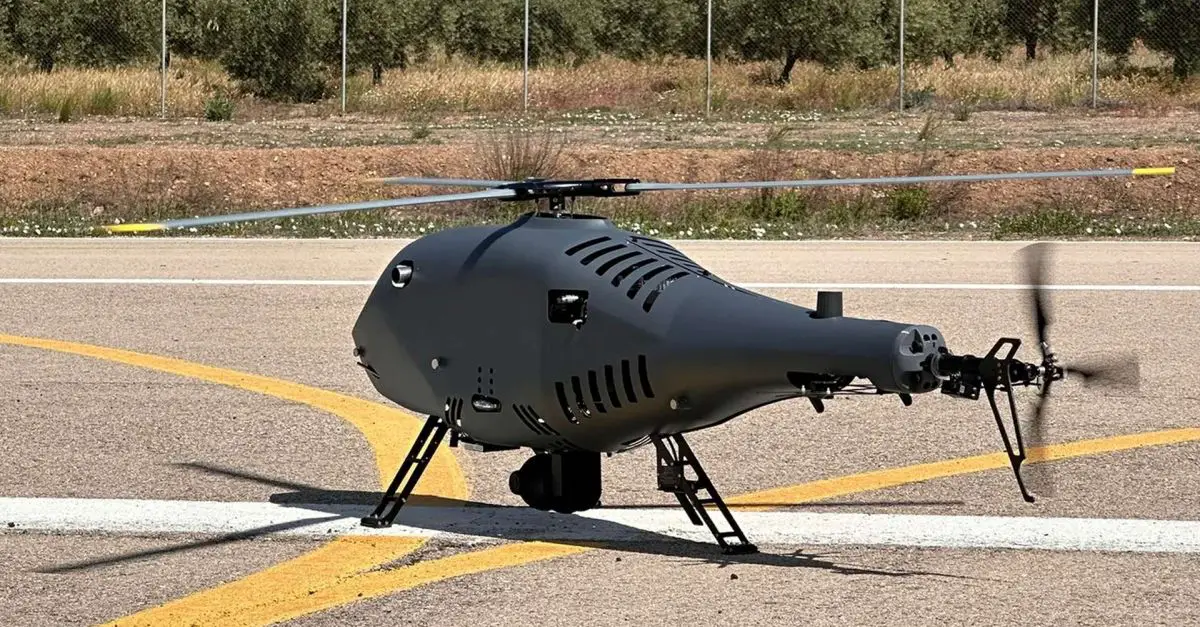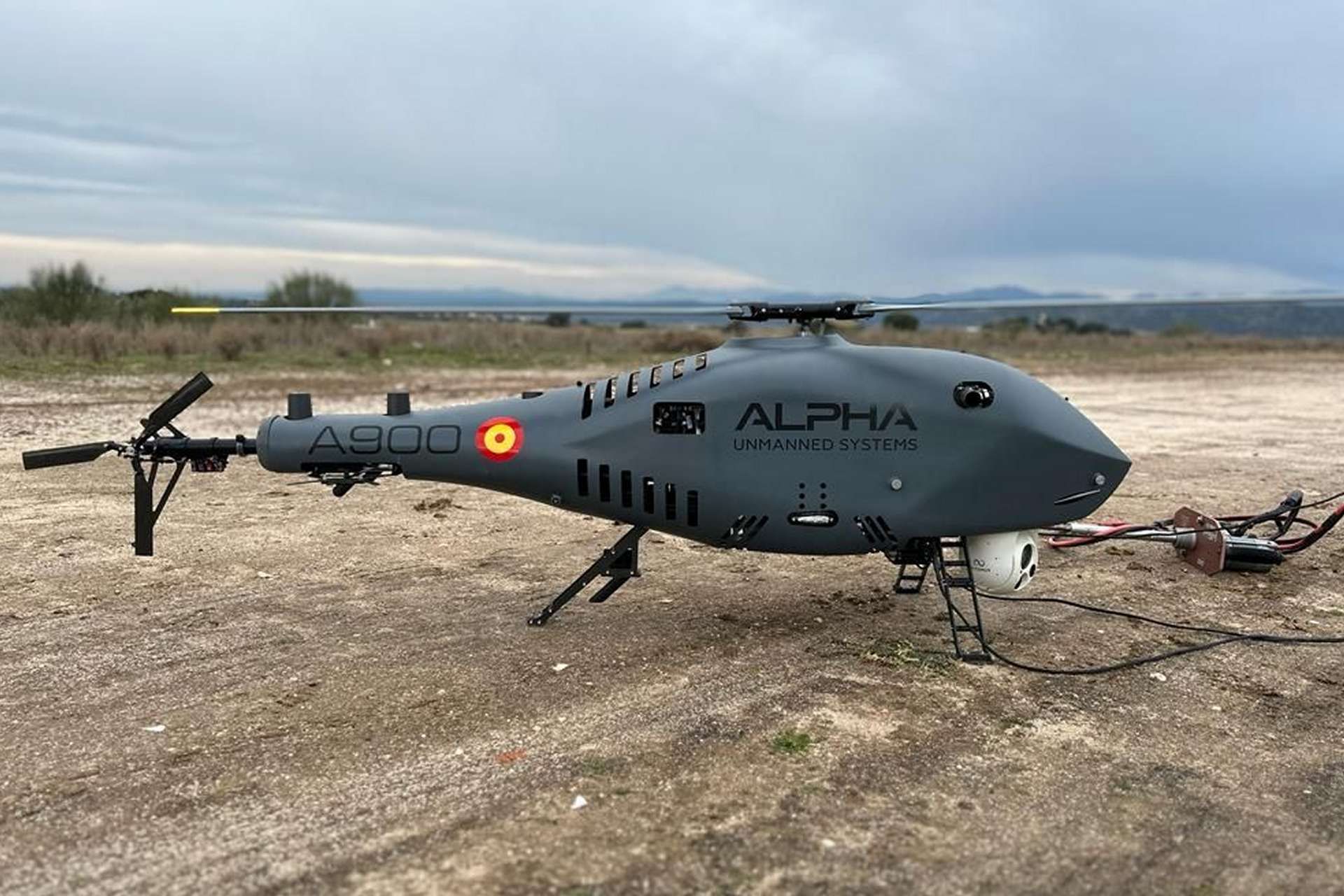Breaking news
US Department of Defense teams up with Spanish Alpha Unmanned Systems for border control.
On May 16, 2024, the Spanish company Alpha Unmanned Systems announced that, as part of an operational assessment for the U.S. Department of Defense (DoD), they are working with Rapid Expeditionary Concepts (RapidXC) in southern Spain. This collaboration involves testing the integration of an electro-optical sensor into Alpha Unmanned Systems' A900 helicopter UAV for border control and persistent surveillance applications.
Follow Army Recognition on Google News at this link

Alpha Unmanned Systems is collaborating with Rapid Expeditionary Concepts to test an electro-optical sensor for the U.S. Department of Defense, focusing on border control and surveillance with their A900 UAV. (Picture source: Alpha Unmanned Systems)
The team from Alpha Unmanned Systems recently traveled to the province of Jaén to participate in these evaluation exercises conducted by Rapid Expeditionary Concepts for the DoD. The tests aimed to validate the integration of various payloads and sensors on both manned and unmanned platforms for land, sea, and air use, with a particular focus on the advanced electro-optical (EO) sensor designed for border control and persistent surveillance operations with UAS.
The A900 helicopter UAV offers several advantages, as it weighs only 25 kilograms and can perform operations of up to four hours with payloads of up to 4 kilograms. Powered by a combustion engine, the A900 can take off and land automatically with high precision on mobile platforms. This makes it suitable for persistent surveillance missions, which utilize the tiling method. The A900 flies at an altitude of 1,000 meters (3,280 feet) and monitors an area of one square kilometer. The UAV's cameras divide this area into nine tiles, capturing new images every five seconds and comparing them with previous images. Any detected changes are identified and classified according to the type of object, recording everything from small UAVs to larger objects. This capability is intended to enhance early threat detection and rapid response in high-risk areas, such as borders.
Eric Freeman, co-founder and executive director of Alpha Unmanned Systems, noted that working with the U.S. DoD on this project leverages the flexibility and efficiency of the Alpha 900 UAV. This collaboration allows the company to provide relevant sensor arrays to meet the changing demands of contemporary conflicts in various areas of operation. He emphasized that border control and persistent surveillance operations with the A900 are designed to improve the capacity for early detection of threats and rapid response to critical situations in areas of strategic interest.

Alpha Unmanned Systems has attracted the attention of various naval forces worldwide, including the Greek Navy, the Indonesian Coast Guard, the U.S. Department of Defense, and the Spanish Ministry of Defense. (Picture source: Alpha Unmanned Systems)
The unmanned aerial systems developed by Alpha Unmanned Systems have been acquired by customers in nine countries and are used on four different continents for diverse purposes, including maritime security, power line inspection, mapping, and precision agriculture. Alpha Unmanned Systems has attracted the attention of various naval forces worldwide, including the Greek Navy, the Indonesian Coast Guard, the U.S. Department of Defense, and the Spanish Ministry of Defense. In Spain, the platforms are also employed by the Military Emergency Unit (UME) and the National Institute of Aerospace Technology (INTA).
As reported by Army Recognition on March 27, 2024, Alpha Unmanned Systems has partnered with Indonesian companies PT. Global Defense and PT. MS.Tech to assemble the A900 UAV in Indonesia. The Indonesian Coast Guard will mainly use this UAV to monitor maritime sectors and identify anomalies within Indonesian territorial waters, as the A900 offers a cost-effective alternative to traditional shipborne helicopters. Designed for operations in challenging maritime conditions, this helicopter UAV can perform automatic landings on moving vessels under sea states 4 or 5 of the Beaufort Scale and handle landings with up to 10º of pitch and roll. The UAV is also equipped with autorotation and flotation devices for emergency situations.
The A900 features protection against electromagnetic interference, an onboard generator supplying up to 150W for payloads, a laser altimeter, and navigation lights. It includes technology for operating in GPS-denied environments, while its control station ensures encrypted communications. The UAV offers autonomous Vertical Take-Off and Landing (VTOL) from moving vessels, more than two and a half hours of autonomous hovering, and is powered by heavy fuel for extended usage. It maintains a minimal logistical footprint and is equipped with four payload bays, each supporting a 4kg capacity. For safety and operational reliability, the A900 includes autorotation, a maximum takeoff weight (MTOW) of less than 25 kg, a cruising speed between 60 and 100 km/h, emergency flotation devices, a Boxer low vibration engine, and redundant systems for critical operations.
These characteristics make the A900 adaptable for a variety of missions, including Intelligence, Surveillance, Reconnaissance (ISR), border control, maritime security, search and rescue operations, infrastructure inspection, communications relays, and forward observation.


























